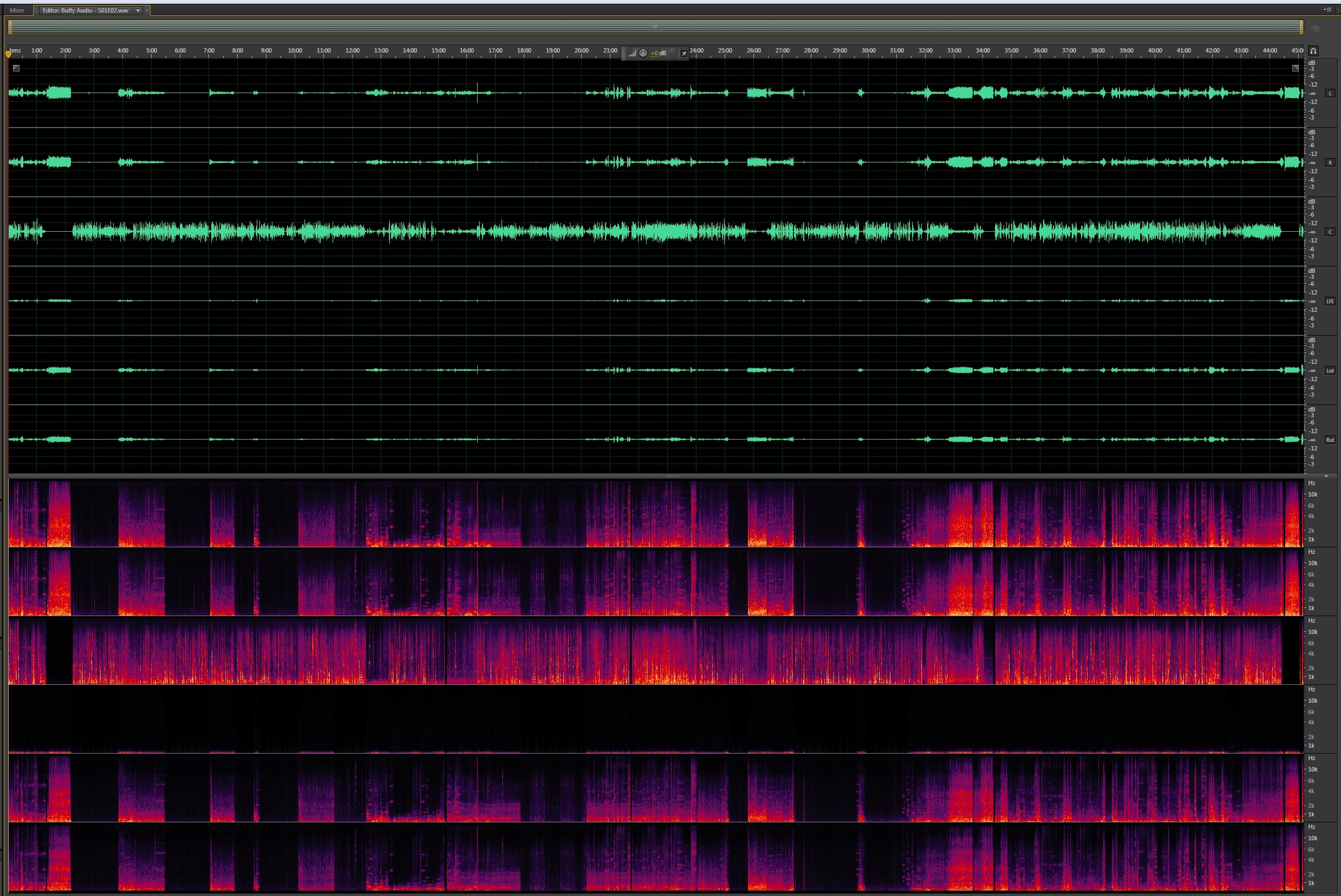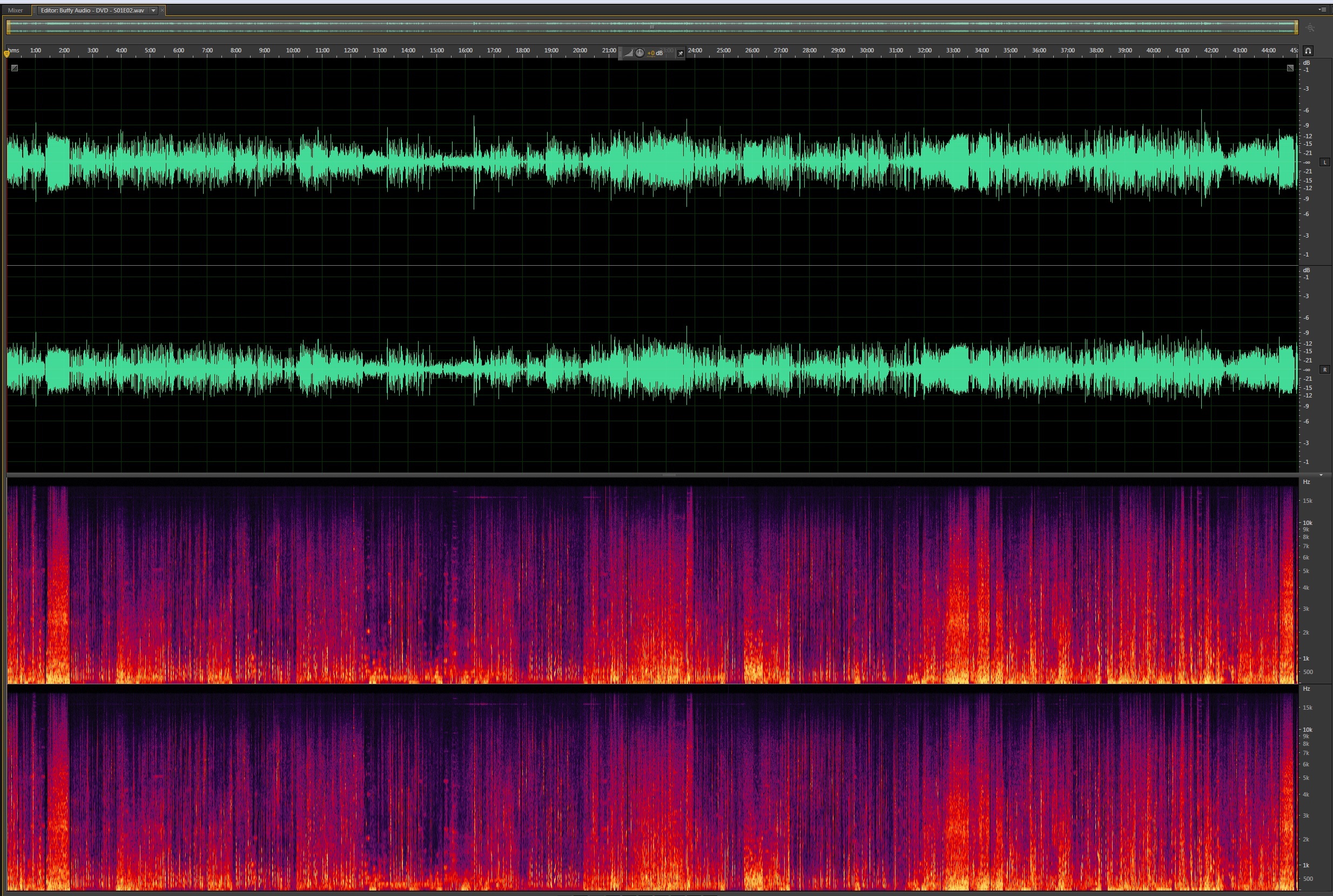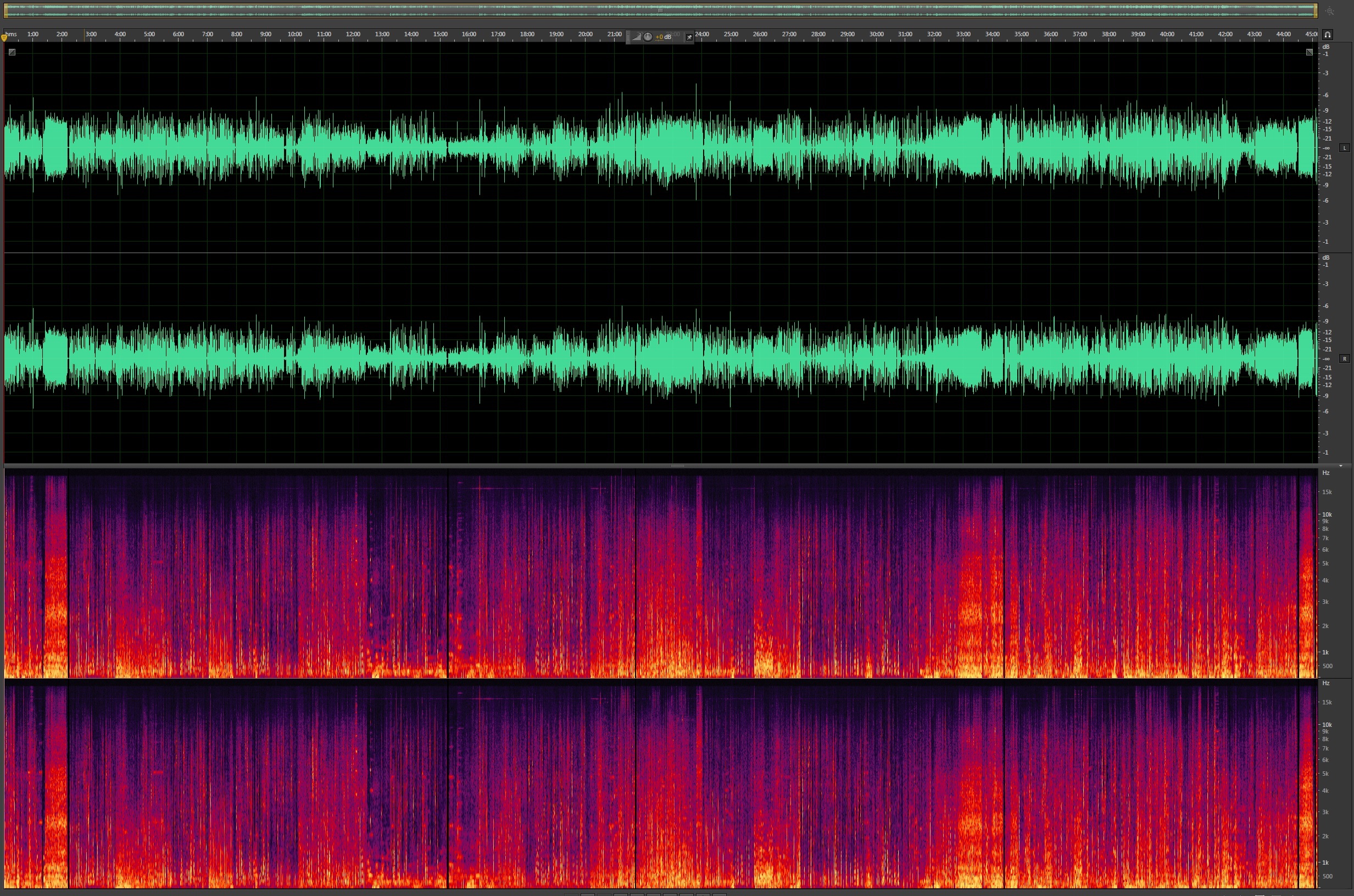CannonShy said:
Regarding the 5.1 mix - I’ve only reviewed one episode (S01E02) - but if that’s consistent with the rest of the series I can say the following:
-
I believe the 5.1 mix is the results of taking the stereo “music and effects” tracks, and running it through a Dolby surround decoder to get Left, Right, Surround Left, Surround Right and a low passed LFE channel - the mono dialog track is used to populate the center channel. My evidence for this is:
– Zero dialogue leakage to left, right, surround, or LFE channels
– Surround and LFE channel activity correlates pretty much 100% with activity in the left and right channels
— Checkout the dialogue heavy section between 02:14 and 03:48 (Giles spins a globe and spouts exposition), no LFE, no surround.
– Seems they’d likely have a M&E/Dialogue split so they could do other language dubs.
-
This means a mixdown should be transparent-ish (see below images)
– A downmix of the 5.1 streaming track I made using ffmpeg looks pretty similar to the original soundtrack, there might be some minor equalization differences - but notice the ~15khz CRT whine in the spectrogram particularly at ~16 minutes present in both it looks to be identical (seems to be coming from the dialogue track)
– There is a question of the relative phase of the surround channels to ensure correct Dolby Surround compatibility in the downmix - would need to check that
Assuming this holds, it should mean that the streaming soundtrack can be downmixed (with the right ffmpeg command) to produce something very very close to the broadcast stereo soundtrack at much higher quality than any actual recording of the original broadcasts we happen to have copies of.
5.1 Streaming mix

DVD Audio 2.0

Streaming mix downmixed to 2.0 in ffmpeg

Don’t forget that many stereo TV broadcasts were actually surround sound and meant to be decoded with Dolby Pro Logic if you had that capability so even during the original TV broadcasts.
"Dolby Surround Pro Logic is the full name that refers to the matrix surround format and decoding system in one. When a Dolby Surround soundtrack is created in post-production (Dolby MP Matrix), four channels of sound are matrix-encoded into an ordinary stereo (two-channel) soundtrack. The center channel is reduced in level by 3 dB and summed to the left and right channels; the surround channel is attenuated by 3 dB, passes through a band-pass filter (cutting frequencies under 100 Hz and above 7 kHz), passes through Dolby B noise reduction and is encoded on the left and right channels with opposite polarity (this is achieved by applying a +90-degree phase shift to the left channel and a −90-degree phase shift to the right channel).[2] The surround channel was often used for ambient background sounds in the original recording, music scores and effects.
A Dolby Pro Logic decoder/processor “unfolds” the soundtrack back into its original 4.0 surround—left and right, center, and a single limited frequency-range (7 kHz low-pass filtered)[3] mono rear channel—while systems lacking the decoder play back the audio as standard stereo. "
"Note that the original Pro Logic had mono surrounds so the side surrounds were the same signal, but Pro Logic II has some additional processing which creates separation in the side surrounds. The end result is a reasonable spacial sound-field but due to nature of matrix encode/decode U are limited to about 20dB separation between channels while with a Dolby Digital 5.1 encode/decode process will yield >50dB. "
I’m not quite sure if NTSC TV broadcasts got switched to try to deliver split surrounds and LFE in 2000 or not.
Anyway, the point is that there is no need to downmix any of the 5.1 sources to try to get the ‘original’ stereo TV broadcasts since they were surround sound to begin with. That said probably for the first four seasons the surrounds were probably not split so technically the 5.1 digital sources wouldn’t be quite the same though I guess (assumg they even actually feature true split surrounds).


